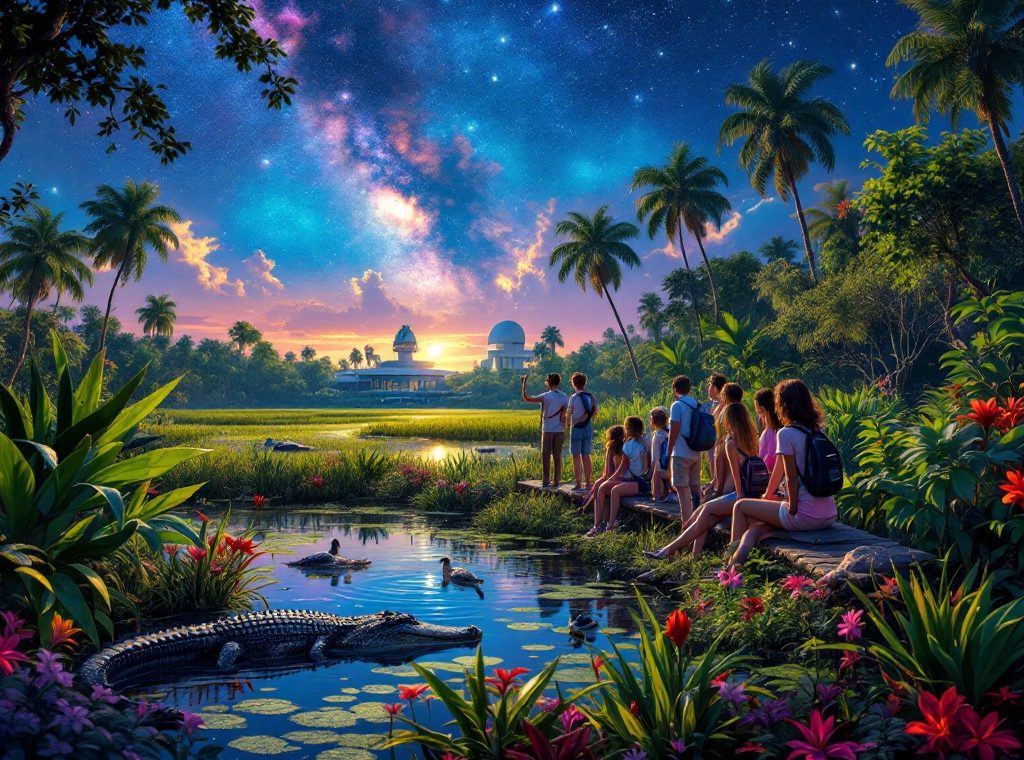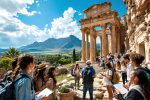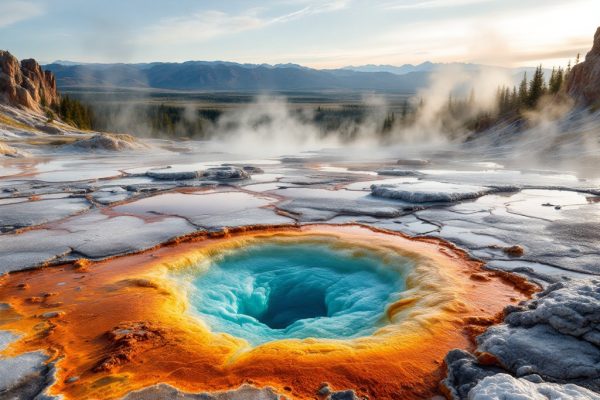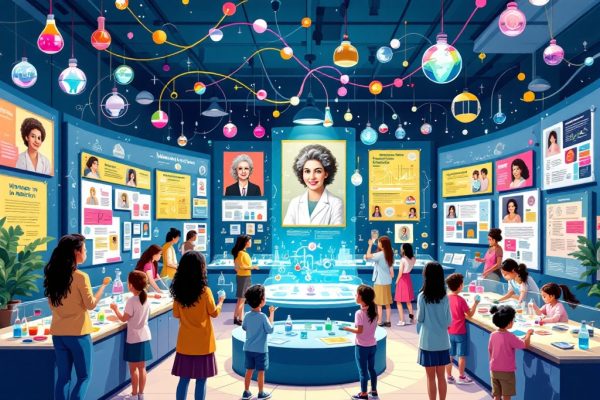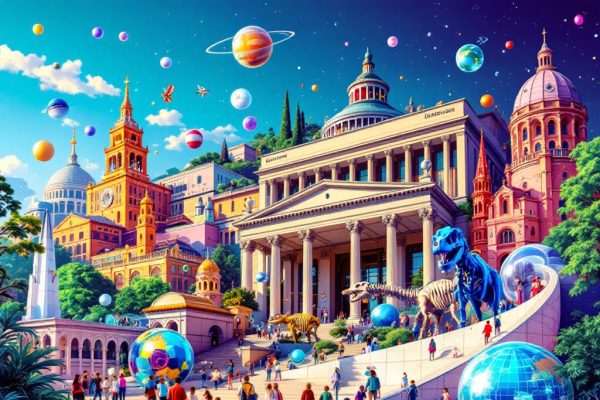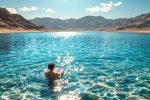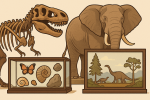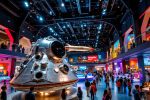Ideas for Scientific Tours
Launch your students into a world of discovery with unforgettable scientific tours! From exploring the Everglades’ vibrant ecosystems to unraveling the mysteries of the cosmos at renowned observatories, these hands-on experiences transform textbook concepts into real-world adventures. Imagine your students conducting experiments in state-of-the-art labs, observing wildlife in their natural habitats, and interacting with leading experts in STEM fields. Scientific tours ignite curiosity, foster critical thinking, and inspire future STEM careers. Dive into our guide and unlock the potential of experiential learning for your students today!
Important information
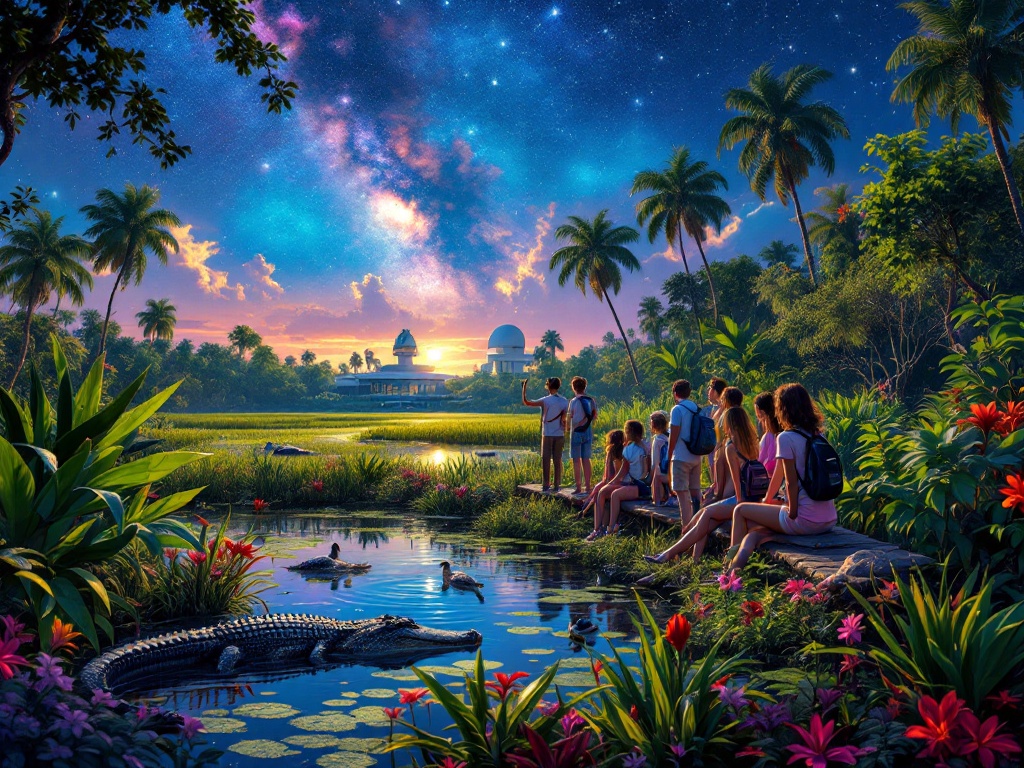
- Science tours offer hands-on learning in diverse fields like ecology, space exploration, and renewable energy.
- Students can explore real-world locations such as national parks, observatories, and research facilities to deepen their understanding of science.
- Tours bridge classroom theory and practical application, boosting critical thinking and potentially inspiring STEM careers.
- Virtual field trips expand access to typically inaccessible locations like the Amazon rainforest or the International Space Station, enhancing learning through immersive experiences.
- Destinations like Southern Florida, Central Florida, Iceland, and Freiburg offer unique learning opportunities focused on specific scientific fields like ecology, STEM programs, geology, and sustainability.
Ideas for Scientific Tours: Exploring the World of Science
Science school trips transform learning into an adventure. Students explore diverse scientific fields, from ecosystems and geological formations to cutting-edge STEM topics.
National parks become living classrooms for ecological study. Renewable energy facilities showcase sustainable practices.
Observatories unveil the mysteries of the cosmos. Marine biology tours reveal the vibrant world of coral reefs.
Wildlife reserves offer thrilling animal encounters. Science centers and museums provide interactive exhibits and workshops that make learning both fun and unforgettable. These hands-on experiences directly engage students with science, creating lasting memories.
Benefits of Scientific Tours for Students
Scientific tours transform textbook concepts into dynamic real-world experiences. Students witness scientific principles in action, sparking curiosity and fostering critical thinking. These excursions bridge classroom theory and practical application, potentially inspiring future STEM careers. Experiential learning, particularly in diverse settings, enhances comprehension and cultivates a deeper appreciation for science. Tours offer memorable learning opportunities that complement traditional classroom education. Furthermore, they encourage teamwork as students collaborate to explore scientific concepts. Key benefits of scientific tours include:
- Bringing scientific principles to life, fostering curiosity and critical thinking.
- Connecting classroom theory with practical application, potentially inspiring STEM careers.
- Enhancing comprehension and cultivating a deeper appreciation for science through experiential learning.
- Providing memorable learning opportunities that complement traditional classroom education.
- Encouraging teamwork and collaboration among students.
Enhancing Science Education Through Real-world Learning
Scientific tours bridge the gap between classroom theory and real-world practice, fostering deeper comprehension and improved problem-solving skills. Hands-on activities, such as experiments and field studies, reinforce learned concepts. Students might experiment in a lab or explore a natural environment, boosting critical thinking and sparking a passion for science. Interacting with experts offers valuable insights and potential career networking. This creates a powerful and engaging scientific experience.
Benefits of Scientific Tours
- Bridge the gap between theory and practice, leading to deeper comprehension.
- Improve problem-solving skills through real-world application of knowledge.
- Reinforce learned concepts with hands-on activities like experiments and field studies.
Experiences Offered
- Conduct experiments in a lab setting.
- Explore natural environments through field studies.
- Boost critical thinking through active participation.
- Spark a passion for science through engaging experiences.
- Interact with experts, gaining valuable insights and networking opportunities.
Hands-on Learning: Engaging with STEM Subjects
Scientific tours offer incredible hands-on STEM learning experiences. Participants observe wildlife, collect data, and explore geological formations, boosting their scientific understanding. They conduct experiments, engage in citizen science projects, and participate in field studies, promoting inquiry-based learning and critical thinking.
Incorporating STEM Topics into Field Trips
Field trips bring STEM subjects to life, showing students how science, technology, engineering, and math apply in the real world. These trips might include visits to science museums, nature centers, or research labs, making learning engaging and relevant.
Field trips focused on astronomy can inspire a love for space. Visiting an observatory lets students observe stars and planets, fostering a deeper understanding of the universe.
Earth science and geology become tangible through field trips. Excursions to geological formations or natural history museums connect classroom learning with real-world examples, providing firsthand insights into Earth’s history.
Bringing STEM Topics to Life Through Field Trips
Scientific tours offer incredible learning experiences, taking students to exciting locations like observatories, national parks, and research facilities. Hands-on activities, such as collecting samples or conducting experiments, boost engagement and make learning come alive.
Wildlife Tours
Wildlife tours expose students to diverse ecosystems and conservation efforts. These real-world applications inspire future scientists and engineers, deepening their understanding of complex concepts.
Renewable Energy Facility Visits
Renewable energy facility visits showcase sustainable practices in action. These real-world applications inspire future scientists and engineers, deepening their understanding of complex concepts.
Scientific tours are invaluable educational tools.
Integrating Astronomy, Earth Science, and Geology
Field trips effectively link astronomy, Earth science, and geology. Observatory visits enlighten students about the cosmos. National parks and geological formations reveal Earth’s structure. These real-world experiences bridge classroom learning with tangible exploration. For instance, analyzing rock formations with geological maps illuminates Earth’s processes. Likewise, observing celestial bodies at an observatory reinforces astronomical principles, deepening students’ understanding of the universe. Furthermore, these integrated trips demonstrate the interconnectedness of scientific disciplines, fostering a richer comprehension of our planet and its place in the cosmos.
Top Locations for Educational Science Tours
Southern Florida is an ecological wonderland. From the Everglades to vibrant coral reefs and coastal mangrove forests, these diverse locations offer unparalleled opportunities for studying ecology, marine biology, and environmental science.
Central Florida sparks a passion for STEM. The Kennedy Space Center provides glimpses into space exploration, and the Orlando Science Center offers hands-on science exhibits.
Iceland beckons with the Northern Lights and unique geological formations, including glaciers and volcanoes.
Freiburg shines as a model of sustainability. It showcases renewable energy technologies and sustainable urban planning.
Southern Florida: Diverse Landscapes and Ecosystems
Southern Florida is a scientific wonderland, offering diverse landscapes and ecosystems perfect for exploration. The Everglades wetlands and vibrant coastal regions are teeming with unique flora and fauna, providing incredible real-world learning opportunities in environmental science. Students might encounter alligators, manatees, and a variety of bird species, sparking scientific curiosity and a deeper understanding of the natural world.
Central Florida: Home to STEM-focused Programs
Central Florida offers a diverse range of hands-on STEM programs, allowing students to explore science, technology, engineering, and mathematics. These experiences ignite their curiosity and encourage them to consider future STEM careers. Students gain practical skills and knowledge through interactive projects, experiments, and real-world applications. This approach fosters critical thinking, problem-solving abilities, and a deeper understanding of STEM concepts. The programs cater to various age groups and interests, ensuring there’s something for every aspiring scientist, engineer, or technologist. Participating in these STEM programs not only equips students with valuable skills but also inspires them to pursue exciting and innovative career paths.
Iceland: Northern Lights and Geology Exploration
Iceland’s unique geology offers students an unparalleled opportunity to explore magnificent glaciers, powerful volcanoes, and geothermal areas. One of the few accessible locations of the Mid-Atlantic Ridge, where tectonic plates diverge, provides a remarkable view of this geological phenomenon. Students can also witness the breathtaking aurora borealis, or Northern Lights, a spectacular light show created by charged solar particles interacting with the Earth’s atmosphere.
Freiburg: Sustainability and Renewable Energy Leadership
Freiburg stands as a beacon of sustainable urban development, prominently featuring solar energy with panels gracing rooftops throughout the city. Buildings are designed with energy efficiency as a core principle, supported by a comprehensive public transportation network, culminating in a remarkably low carbon footprint. Green spaces are woven into the urban fabric, and sustainable waste management practices are a key element of the city’s approach. Discover Freiburg’s dedication to environmental sustainability through educational tours that offer an in-depth exploration of these groundbreaking initiatives.
Key Sustainability Features of Freiburg
- Solar Energy Leadership: Rooftop solar panels are a ubiquitous sight, showcasing the city’s commitment to renewable energy.
- Energy-Efficient Buildings: Building design prioritizes minimizing energy consumption, contributing significantly to the city’s reduced carbon footprint.
Further Exploration
- Comprehensive Public Transport: An extensive and efficient public transportation system minimizes reliance on private vehicles.
- Green Spaces and Waste Management: Freiburg emphasizes green areas and sustainable waste management, enhancing the overall quality of life.
- Educational Tours: In-depth tours provide valuable insights into the city’s sustainability initiatives.
Interactive Experiences in Science Centers and Museums
Science centers and museums offer exciting, hands-on learning experiences that engage students of all ages. Interactive exhibits and programs foster a better understanding of science and technology.These venues provide diverse learning opportunities. Visitors can enjoy hands-on exhibits, demonstrations, and workshops spanning various scientific fields. They can interact with displays, conduct experiments, and participate in educational programs tailored to different learning styles. This cultivates a deeper understanding of science.Virtual field trips offer another avenue for exploration. They leverage technology to create immersive experiences. Students can explore distant locations, interact with 3D models, and even conduct virtual experiments. This expands access to science and enriches traditional field trips.
Exploring Science and Technology at Science Museums
Science museums offer a vibrant, hands-on exploration of complex scientific concepts, bringing subjects like physics, biology, and cutting-edge technology to life. Through interactive exhibits and engaging programs, visitors of all ages can delve into these topics in a fun and accessible way. Many museums also feature planetariums, impressive domes showcasing the wonders of the cosmos. Institutions like the Smithsonian National Air and Space Museum and the California Academy of Sciences provide incredible examples of this immersive learning. Beyond exhibits, they host special events, workshops, and demonstrations, enriching the experience and fostering a lifelong appreciation for science and technology.
Virtual Science Field Trips for an Immersive Experience
Virtual science field trips offer incredible learning opportunities, allowing students to explore diverse locations without leaving their classrooms. These virtual tours enhance science education, complementing real-world experiences while also providing access to otherwise inaccessible destinations. Imagine exploring the Amazon rainforest, visiting the International Space Station, or even venturing to deep-sea hydrothermal vents – all from the comfort of a classroom. These interactive tours often incorporate simulations and 360° views, making learning both engaging and fun. They offer a unique blend of education and entertainment, fostering a deeper understanding of scientific concepts.
Exploring Advanced Scientific Concepts
At CERN, home of the Large Hadron Collider, the enigmatic world of particle physics unfolds. Students gain firsthand experience with complex scientific concepts in its advanced underground laboratories, exploring cutting-edge research within these high-tech caverns.
CERN and the Large Hadron Collider: Understanding Particle Physics
CERN, the European Organization for Nuclear Research, operates the Large Hadron Collider (LHC), the world’s most powerful particle accelerator. Students touring this enormous facility can delve into cutting-edge particle physics research, exploring the universe’s fundamental building blocks and the forces governing them.
Underground Caverns: Hands-on Experiences in High-tech Labs
Journey into the Earth’s hidden realms! Discover awe-inspiring underground caverns like Carlsbad Caverns and Mammoth Cave National Parks, where you can explore unique geological formations firsthand. These parks also offer a glimpse into cutting-edge science with their high-tech labs, researching cave ecosystems and geological processes. Students can even collect rock samples and analyze cave data, gaining invaluable insights into scientific research.

